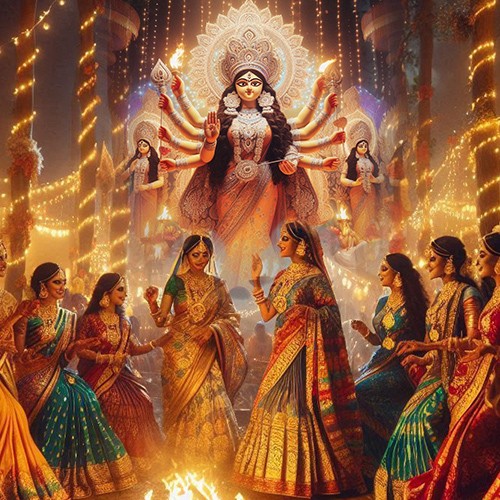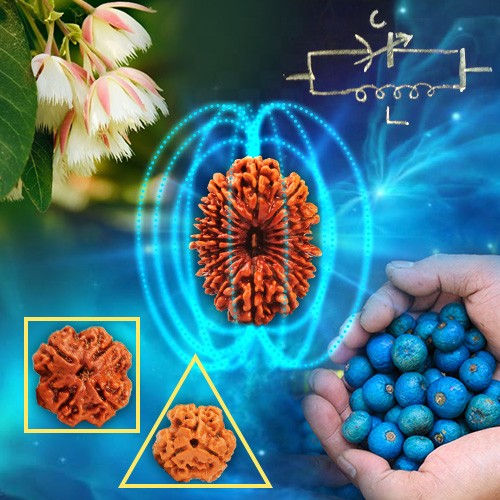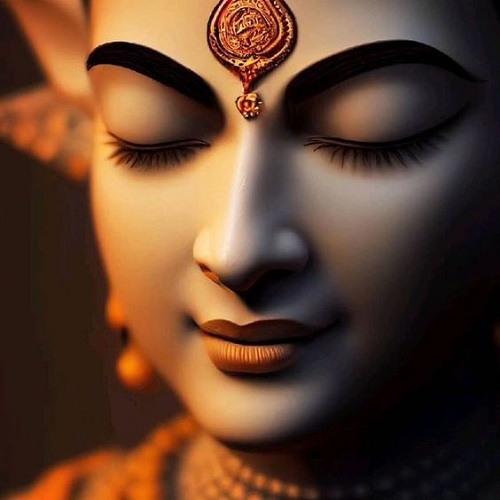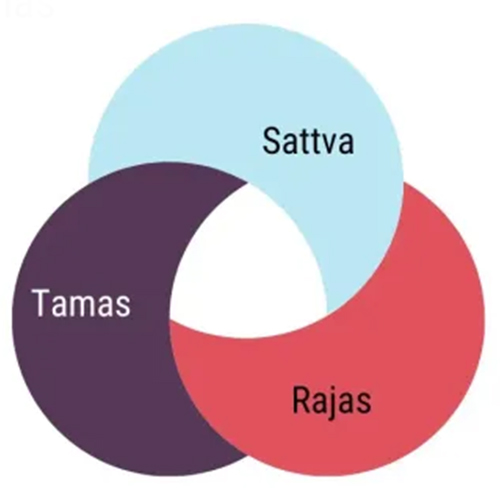Swati Nakshatra represents the flow of free-spirited energies- independent, adaptable, and exploratory. It is the fifteenth lunar mansion, extending from 6°40′ to 20°00′ Libra (Tula Rashi). True to its symbol of a young sprout swaying in the wind, Swati embodies growth, flexibility, and resilience. Its guiding deity is Vayu, the God of Wind, who blesses this nakshatra with movement, dispersal, and the spirit of exploration.
The planetary ruler of Swati is Rahu, which grants curiosity, unconventional thinking, and an innate thirst for freedom. Being positioned in Libra, under the sign lordship of Venus, it reflects refinement, diplomacy, and creative potential. Thus, Swati natives often oscillate between Rahu’s restless independence and Venus’s desire for harmony, developing versatility and adaptability as life lessons.
Swati Nakshatra: Basic Overview
Ruler (Graha): Rahu
Zodiac Range (Rashi): Libra (6°40′ – 20°00′)
Deity: Vayu (God of Wind)
Symbol: A young sprout or tender shoot swaying in the breeze
Shakti (Power): Pradhvamsa Shakti – the power to scatter and disperse like the wind
Motivation (Purushartha): Artha (material prosperity)
Yoni (Animal): Male Buffalo
Caste: Butcher
Tattwa (Element): Air
Guna: Tamas
Swati Nakshatra symbolizes the winds of change- independence, movement, and discovery. People born under this star often carry a strong urge to walk their own path, guided by inner freedom rather than social conformity. They are resilient, innovative, and diplomatic, with the ability to harmonize differences once they mature. Yet, their challenge lies in channeling scattered energies into meaningful direction, learning balance while maintaining individuality.
In essence, Swati teaches that true freedom is not just independence, but the ability to flow with the universe while staying rooted in self-respect and integrity.
About Vayu | Story of Swati Nakshatra
Swati Nakshatra derives its essence from Vayu, the God of Wind, who embodies independence, flexibility, and unrestrained movement. As the breath of life, Vayu sustains creation by flowing freely across the three worlds. His energy is swift, penetrating, and ever-changing, reminding us that freedom is both a force of growth and a source of resilience.
The symbol of Swati- a tender sprout swaying in the wind, reflects Vayu’s nature. Just as the wind bends but does not break the young plant, Swati natives learn to adapt, survive, and flourish amidst life’s turbulence. This freedom is not chaos, but the strength to remain clear and steady even in the midst of constant change.
In the Rigveda, Vayu is praised as the swiftest of the gods, the life-giving force of breath (prana), and the first to receive the offerings of Soma. He is described as the messenger of divine energies and mover of universal balance, carrying life through his eternal flow. His qualities of speed, grace, and adaptability shape the spiritual lessons of Swati Nakshatra.
Through Vayu, Swati Nakshatra inspires the soul’s upward journey. It is not merely a quest for freedom from bondage but a pursuit of higher knowledge and purpose. Vayu’s winds teach us to expand beyond limitations, to remain adaptable in shifting circumstances, and to embrace growth through constant movement. The deeper wisdom of Swati is that freedom and independence, when guided with clarity, can nurture harmony within and with the cosmos.
Swati Nakshatra Symbolism
Swati Nakshatra is symbolized by a tender shoot of a plant swaying with the wind. This imagery beautifully captures the qualities of independence, adaptability, and resilience. Just as a young sprout bends with every breeze yet continues to grow, Swati reflects the spirit of flexibility and the determination to thrive despite shifting circumstances.
The sprout also represents self-discovery and individual growth. It signifies a soul learning to stand on its own, guided by freedom, curiosity, and the winds of change. Swati teaches that life’s uncertainties are not obstacles but opportunities for evolution, urging us to remain adaptable while holding firmly to our inner essence.
At its deeper level, Swati symbolizes movement toward self-mastery. It reminds us that independence is not isolation, but the capacity to align gracefully with life’s ever-changing flow. By yielding without breaking, Swati natives learn strength through flexibility and clarity through perseverance — a journey of freedom that ultimately nurtures balance and growth.
Significance of the Shakti of Swati Nakshatra
Every Nakshatra carries a unique Shakti, the divine power of its presiding deity. For Swati, ruled by Vayu, the God of Wind, the Shakti is called Pradhvamsa Shakti, the power to scatter and disperse like the wind.
Basis Above (Adhidevata): Movement in many directions
Basis Below (Adhibhuta): Change of form
Result: Transformation
This Shakti shows that Swati can cause things to move, disperse, and transform. Like the wind, its influence can be both constructive and destructive. When uncontrolled, it may bring instability or loss. But when harnessed with awareness, Swati’s energy clears away negativity, enabling renewal and higher growth.
Swati grants freedom of motion, travel, and independence- both outwardly in worldly pursuits and inwardly in spiritual exploration. Its scattering power represents the vast possibilities of life, urging us to adapt, expand, and evolve. Ultimately, Swati teaches that transformation is achieved not by resisting change but by flowing with it, allowing the winds of Vayu to carry us to higher dimensions of existence.
Rahu & Swati Nakshatra
Swati Nakshatra draws much of its dynamic energy from its planetary ruler Rahu, the shadow planet that governs illusion, expansion, and unconventional growth. Rahu injects into Swati a restless curiosity, a drive for independence, and the courage to explore the unknown. Like the tender sprout swaying with the wind, Swati reflects flexibility and adaptability, but Rahu magnifies these qualities with an unyielding thirst for freedom, discovery, and reinvention.
At its higher expression, Rahu channels Swati’s airy energy into self-discovery and personal liberation, enabling the native to overcome limitations with innovation and resilience. Yet, at its lower expression, Rahu may scatter energy in too many directions, causing instability, restlessness, or excessive attachment to worldly desires. The task of Swati natives is to direct Rahu’s winds toward clarity, so that independence becomes a path to true inner growth rather than distraction.
The combination of Rahu’s expansion and Swati’s fluidity creates a soul journey marked by change, adaptability, and transformation. Just as wind scatters seeds, leading to new growth, Swati natives are pushed to expand both outwardly in worldly pursuits and inwardly in the search for authenticity. The lesson of Rahu in Swati is that freedom must walk hand-in-hand with responsibility, teaching us how to align worldly ambitions with the deeper call of spiritual purpose.
Swati Nakshatra Rashi
Swati Nakshatra is the fifteenth lunar mansion, spanning 6°40′ – 20°00′ in Libra (Tula Rashi), following Chitra and preceding Vishakha. Libra, ruled by Venus (Shukra), represents balance, refinement, and the pursuit of harmony in relationships and worldly life.
When Swati operates within Libra, the airy independence of Vayu (its deity) combines with Venus’s refined charm, producing individuals who are graceful, diplomatic, and adaptive, yet deeply driven by freedom. The sign influence of Libra brings an instinct for cooperation, while Rahu as Swati’s planetary ruler adds restlessness, originality, and the courage to walk untrodden paths.
This placement reflects a unique paradox, the desire for autonomy alongside the need for equilibrium. Swati in Libra teaches that true independence is not about escaping balance, but about harmonizing one’s individuality with the broader flow of relationships and society. It bestows adaptability, charm, and creativity, yet also challenges the native to anchor their freedom in responsibility and discernment.
Padas (Quarters) of Swati Nakshatra
Swati Nakshatra, ruled by Rahu and presided over by Vayu, the God of Wind, is divided into four padas (quarters). Each pada expresses a different shade of Swati’s independence, adaptability, and free-spirited nature, shaping how its energy manifests in life.
1st Pada: 6°40' - 10°00' Libra (Aries-Ruled Navamsa)
The first pada of Swati carries the fiery influence of Aries, giving natives a bold, pioneering, and energetic spirit. These individuals are highly independent, action-oriented, and eager to take initiative. They often display entrepreneurial ability, leadership qualities, and the courage to forge new paths.
However, the strong Martian influence can also make them impulsive, restless, or overly self-focused. The challenge of this pada is to balance personal ambition with cooperation, and to channel raw energy into constructive action rather than hasty decisions. When harmonized, this pada produces courageous trailblazers who combine Swati’s adaptability with Aries’ pioneering drive.
2nd Pada: 10°00' - 13°20' Libra (Taurus-Ruled Navamsa)
The second pada of Swati blends Rahu’s restless independence with the earthy stability of Taurus. Natives of this pada are practical, grounded, and drawn toward material comforts, financial security, and artistic expression. They often excel in fields connected to wealth management, trade, agriculture, design, or the arts, where patience and persistence bring long-term rewards.
This pada lends Swati a nurturing and steady quality, giving the ability to consolidate resources and create enduring value. However, the challenge lies in excessive attachment to possessions, luxury, or rigid routines. If natives resist change, they may miss opportunities for growth. When balanced, this pada produces individuals who combine Swati’s adaptability with Taurus’s stability, achieving prosperity through persistence and creative talent.
3rd Pada: 13°20' - 16°40' Libra (Gemini-Ruled Navamsa)
The third pada of Swati blends Rahu’s restless energy with Gemini’s Mercurial intellect and communication skills. Natives of this pada are expressive, witty, versatile, and socially adaptable, excelling in areas where interaction, information exchange, or quick learning is essential. Careers in writing, media, journalism, teaching, public relations, or networking-based professions suit them particularly well.
This pada highlights Swati’s charm and the ability to connect with diverse perspectives, making natives natural communicators and bridge-builders. However, the same adaptability can lead to scattered efforts or superficial engagement, as they may struggle to remain consistent or dig deep into one pursuit. When directed with focus, this pada produces individuals who thrive by cultivating knowledge, sharing ideas, and growing through communication and learning.
4th Pada: 16°40' - 20°00' Libra (Cancer-Ruled Navamsa)
The fourth pada of Swati merges the airy independence of Vayu with the emotional depth of Cancer’s lunar influence. Natives of this pada are empathetic, intuitive, and nurturing, with a strong sense of connection to family, community, and relationships. They often excel in roles involving caregiving, counseling, healing, or creative expression, where emotional insight is a strength.
However, this pada also makes individuals more prone to mood swings, over-sensitivity, and dependence on emotional validation. Their challenge is to develop self-reliance while honoring their instinct to nurture others. When harmonized, this pada produces compassionate and emotionally intelligent individuals who channel Swati’s freedom into deeper bonds and creative fulfillment.
Characteristics of Swati Nakshatra Natives
Personality Traits
- Flexible and Independent: The natives of Swati are extremely flexible and adapt to change without much fuss. This independent entity inside them compels them to seek freedom and independence in all walks of life. Their adaptability and self-dependency inspire others to lead life with the same level of confidence and freedom.
- Diplomatic yet Sometimes Indecisive: It makes them natural peacekeepers as they are capable of mediating conflicts and settling disputes amicably, nobody does it better than they do. On the other side of the coin, too strong an inclination toward balance often leads them into hesitation or over-intellectualizing when important decisions are pending and this is a growing point.
- Charismatic and Sweet: Swati natives are basically charming, and people are drawn towards them. Sweetness in their way and speech makes them form enduring relationships, and they keep an environment of harmony wherever they exist.
Physical Appearance
- Graceful Airy Elegance: This gives them an air of lightness and sophistication which draws the attention of a lot of people. The poise in their mannerisms and gait is an assurance of being naturally attractive and gives that air of distinction among peers or in professional settings.
- Sharp Features and Expressive Eyes: In general, the native Swati is found to have sharp facial features and sparkling eyes that are expressive. Their eyes reflect their depth of intellect and openness, symbolic of curiosity and exploration.
Gender-Specific Traits
- Swati Nakshatra Female: The females born under this nakshatra are highly intelligent and resourceful, performing well in those fields that demand creativity and interpersonal skills. While maintaining calm in stormy situations, they also have an ingrained knack for finding solutions that make them admired in both personal and professional spheres.
- Swati Nakshatra Male: Males born under the influence of this nakshatra are visionaries, having a realistic approach towards everything. Resourceful and eager to improve themselves, they often attain success in life. The power to handle challenges with poise allows them to emerge as able leaders, though they would do well to work upon persistence to complement their flexibility.
The natives of Swati Nakshatra are versatile, diplomatic, and charismatic. They sparkle in building harmony and relationships, but never lose their independence and curiosity. Their physical and intellectual appeal, along with their resilience, guarantees their prominence within the zodiac.
Relationships & Compatibility of Swati Nakshatra
The natives born under the Swati Nakshatra bring stability, flexibility, and fondness for harmony into marital life. While independent and idealistic, they do not shrink from tense moments about freedom; instead, it is this very urge for balance and respect from both sides that so often shapes and strengthens the marital relationship in them as a devoted, understanding, and lasting one.
Swati Nakshatra Marriage Compatibility
- Best matches: They automatically appeal to nakshatras ruled by Venus or Mercury: Chitra and Hasta being the best matches to the Swati Nakshatra natives. These nakshatras complement Swati's independent and diplomatic natures with creativity and pragmatism, thus fomenting relationships full of mutual admiration and steady comradeship.
- Challenges in Marriage: The love of Swati natives for their independence and space sometimes creates a rift with the partner who needs to be close to them all the time, or who exercises control over them. Idealistic and indecisive at times, they may create clashes, but their natural charm and adaptability, along with earnest commitment, usually restore order in their relationships.
Swati Nakshatra Female Married Life
Graceful, poised, and tactful, woman born in Swati Nakshatra executes marital responsibilities quite gracefully with poise. They add a note to their relations of harmony mingled with independence and warm emotionality. These women most often provide inspiration to an intellectual or spiritual growth into their spouse while they themselves can see to it that the whole family evolves in peace and mutual respect. Though they value personal freedom, loyalty and devotion create a secure and fulfilling marital bond.
Swati Nakshatra Male Married Life
Men influenced by Swati Nakshatra prove to be charming and diplomatic partners who believe in fairness and equality in marital relationships. Calm and reasonable, they see to it that there is no unnecessary conflict to disturb the tranquility of family life. Their partial resistance to binding commitments resulting from their love for freedom can create some minor hindrances; still, all such obstacles are overcome due to their inherent adaptability and sense of fairness. Swati men believe in open communication and mutual understanding that helps them build lasting, enriching relationships.
For Swati Nakshatra natives, marriage is the balancing act of growth of the self and an eternal devotion to the happiness of togetherness. The balance they naturally create between independence and companionship sets up an atmosphere of love and respect. Their union becomes one filled with depth of emotion, common aspiration, and lasting concord.
Career, Professional & Financial Aspects
Swati natives prosper by living in an independent environment with adaptability, ability to bring harmony amongst disintegration and chaos. Gifted exceptionally with the ability to balance strength with diplomacy, they fit well in areas related to negotiation, innovation, or even cultivating creative or intellectual ideas. Thus, inherently different and uniquely skilled at their ability to be adaptable toward changing situations, Swati people fare very well in careers requiring flexibility, communication skills, and constant pursuit to excel.
Indeed, with an inquisitive and intellectual bent of mind, the Swati native is innately attracted toward vocations related to investigation and imagination. Intellectual pursuits or relationships -these are the areas where the Swati natives always show finesse, dignity, and commitment, along with inspiring others in growth and maintaining a poised balance.
Popular Professions
Mediators and Diplomats: The airy and harmonious essence of Swati calls for natives to excel in professions like diplomacy, negotiation, or conflict resolution. Tactful and persuasive, they are able to bridge the divide, build relationships, and foster peaceful solutions.
Artists and Innovators: With a natural artistic streak, the Swati natives often get thrown into the whirlpool of taking up either art, design, media, or technology as a vocation. Artistic work, speaking so well to their aesthetic sense of innovation and uniqueness, deeply reflects in another human life.
Writers and Scholars: Intellectual curiosity, the love of knowledge, makes Swati natives excellent writers, teachers, and researchers. Deep and critical thinking capacity coupled with articulateness often brings transforming insight into their respective fields.
Business Men and Traders: It is their innate intellect, merged into independent-bent minds, wherein endows them adequately, skillfully with ways necessary that an awareness of opportunity should begin followed with organizing resources aimed to compete and attain a purpose desired in any field.
Communication Experts: Intrinsic eloquence, along with the ability to relate well with people from any stratum of society, is all that Swati natives possess; hence, they seldom remain behind the curtains while pursuing careers related to public relations, marketing, or media. They convincingly handle any situation tactfully, and the art of convincing others makes them strong, popular voices in their respective fields.
The natives of Swati Nakshatra are a unique blend of independence and harmony. They do well in areas of life that require adjustment, intellectual involvement, or creative troubleshooting. Whether it is putting together the forces of divergence, innovating for progress, or digging deep into the ocean of knowledge, they bring a soft yet transformative energy to whatever profession they choose.
Swati Nakshatra Remedies
If the Moon in Swati is poorly placed at the time of birth, the nakshatra tends to exhibit its negative traits, necessitating some remedies to minimize these and harness as much as possible the positive potential of Swati Nakshatra.
Individuals influenced by Swati Nakshatra can achieve profound growth and fulfillment by embracing its free-spirited and harmoniously adaptive energy. Worship Vayu, the deity of wind and movement, as a potent remedy.
Chanting the mantra 'Om Vayudevaya Namah' or the Rahu mantra 'Om Rahave Namah' regularly helps balance its independent and ever-curious traits.
Fasting on Wednesdays can enhance confidence and decisiveness by propitiating Rahu, and assist in channeling their wandering energy constructively.
Wearing a natural Hessonite gemstone, renowned for its association with clarity, ambition, and grounded Rahu energy, helps Swati natives harness their innate adaptability and balance independence with stability and purpose.
Buy Hessonite Gomed Garnet Stone
Meditative practices and lifestyle adjustments can be highly beneficial. Visualizing the wind gently swaying a tree or practicing pranayama techniques such as Anulom Vilom enhances calmness and focus, helping to temper the restless energy often associated with Swati natives.
Supporting initiatives focused on environmental preservation or volunteering at community service projects aligns deeply with the essence of this nakshatra and reveals its harmonious, socially integrative potential fully in alignment and concert with its cosmic Intention.
Swati natives should include light blue and green shades in their clothes or surroundings to bring calmness. Symbols of movement, like the wind, open skies, or flowing water, in personal spaces act as reminders of their expansive and independent nature.
They can unlock their potential for growth, balance, and fulfillment by integrating these remedies into their lives, while maintaining their focus on freedom and their spiritual journey.
Famous Personalities
Swati Nakshatra, symbolizing independence, adaptability, and balance, adorns the birth charts of many famous people who carry this free-spirited and harmonious sign of the nakshatra. People born with their Moon in Swati Nakshatra are visionaries, mediators, and innovators -that is, flexile, diplomatic, and transformative in growth.
Charlie Chaplin: A filmmaker-comedian cherished for eternal artistic expressions and a deep connect with cinemas presents in this manner Swati creativeness, her ability, and knack to strike a chord from a wide spectrum of audiences in essentiality. It is from his works that one experiences the nakshatra containing in equated measure humor and profound social comments.
Harry Truman: The 33rd President of the United States, whose strong leadership at the juncture of World War II and the Cold War, mirrors Swati's adaptability and strategic decision-making. The way he navigated global challenges reflects the nakshatra's diplomatic energy.
George Harrison: Iconic musician and part of The Beatles, he voices his spiritual pursuits through such harmonious compositions, standing so rightly for Swati's quest for balance and transcendence. This work is testimony to how Eastern and Western musical traditions could be integrated into one creative unit, and this loudly speaks to the unifying, creative nature of this nakshatra.
James Dean: The cultural icon and actor, acclaimed for his mesmerizing performances and appeal of rebellion, who embodies Swati's uninhibited and transformative energy. His spirit as a cultural icon for youthful independence leads into the nakshatra's sign of individuality and flexibility.
Hank Aaron: This baseball legend is an embodiment of resilience and record-breaking feats, really echoing Swati's enduring and balanced qualities. His will to make it big despite challenges does show the strength and will to achieve greatness in the nakshatra.
Nelson Rockefeller: This influential politician, businessman, and philanthropist is symbolic of Swati's resourceful and diplomatic nature in immense contributions to public service and the arts. He resonates with innovation and collaboration, much like the nakshatra, in an even-keel manner.
Whoopi Goldberg: She is a celebrated actress, comedian, and activist, and her career has been pathbreaking. She has succeeded in cutting across many difficult social issues with her humor and empathy, bringing Swati's versatility and transformative power. Her influence brings into light the nakshatra's potential for change via creativity and dialogue.
The complex, adaptive persona of the former inspires others to welcome diversity and ignite growth by the spirit of cooperation. Like beacons blazing across the artistic, political, and innovative dimensions around the world, so they act as channels through which Swati Nakshatra releases its cosmic energy and intrinsic wisdom for the fostering of harmony on the planet.
Conclusion: The Liberating Winds of Swati Nakshatra
Swati Nakshatra is the heavenly breeze of independence and adaptability. It symbolizes freedom, flexibility, and self-realization. It reminds us through the great starry vault that life is a journey where individuality and harmony with the larger universe go hand in hand. Presided over by Vayu, the God of Wind and movement, this nakshatra urges us toward embracing the currents of life-change and stability, solitude and connection as part of the rhythm of growth. Its symbolism, for the tender sprout that dances in the breeze, reflects deep inside us the strength to bend, to survive, and to flower through life.
With its freeing energy, Swati teaches the importance of self-reliance and tempered humility while one weighs up all possibilities with an open heart and mind. From the inspirations of intellectual pursuits and innovative undertakings to fostering spiritual awareness, Swati Nakshatra directs humanity toward the transforming power of self-discovery. It tells you the key to your highest possible condition is flowing gracefully with rather than fighting the winds. For within each gust of shift and change lies the seed, not just for a new beginning for a man but one carrying him to horizons beyond known existence.
In the big scheme of Vedic astrology, Swati Nakshatra weaves a dynamic thread of exploration and soul freedom, full of unwatched potential ready to flourish. By being attuned with its cosmic influencing energy, one wakes up a power within themselves to stay self-assured amidst adversities while converting aspirations into accomplishments -so true to the essence that is you. Let Swati Nakshatra be your mentor, as it has for many in the past, to dance through life wisely, adaptively, with an open heart that discovers miracles in the mundane.


-in-Astrology.jpg)






.jpg)



Comments 0
Leave your thought here